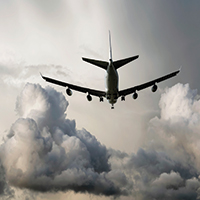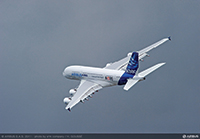
Features
Operations
Storm on the horizon
Air transport planners are riding high on growth. It is estimated that by 2030, the world’s airlines will transport approximately six billion passengers, more than double the number that passed through airports in 2011.
November 3, 2011 By David Carr

|
|
| From building the airplanes to bringing them back to earth, air transport’s value chain is being weakened by skills shortages and underinvestment that could endanger future growth projections.
|
Air transport planners are riding high on growth. It is estimated that by 2030, the world’s airlines will transport approximately six billion passengers, more than double the number that passed through airports in 2011. Airbus predicts the greatest leap will come from emerging economies, although more mature markets such as Canada, the U.S. and Europe will more than hold their own with traffic expected to double over 20 years.
Depending on who is doing the forecasting, airlines either expanding fleets or replacing aging gas-guzzlers will create demand for between 28,000 and 31,000 airplanes with more than 100 seats and freighters worth between $3.5 trillion and $4 trillion. Canada’s Bombardier estimates demand for up to 13,000 aircraft in the 100- to 149-seat CSeries category between now and 2030.
There are strong facts fuelling the optimism. Air travel remains remarkably resilient. Since 1970, world air traffic has roared back from two oil crises, a Gulf War, 9-11, SARS and the 2008 global financial meltdown. Last year, passenger air traffic rebounded to pre-recession levels. Despite unresolved concerns over government debt, the industry is on track to achieve six per cent growth in 2011.
It also appears to be smarter growth. There are early indications that business travellers are once again moving further up the aisle. The International Air Transport Association (IATA) reports a 7.5 per cent year-over-year increase in first- and business-class travel on overseas flights for the month of July. The industry is also doing a better job of filling all cabins. The average load factor is bordering on the 80 per cent mark as airlines have shifted to chasing profits rather than the destructive pursuit market share.
Even so, profit has all the resilience of a vapour trail. According to IATA, the average net margin since 1961 is a paper-thin 0.1 per cent. 2010 was air transport’s most profitable year, but the $18 billion earned amounts to a margin of 3.2 per cent and falls seriously short of the seven to eight per cent cost of capital.
This situation raises the question, is 4.8 per cent annual growth over the next 20 years sustainable, especially when factoring in all the other supports needed to keep the airplanes flying? From building the airplanes to bringing them back to earth, air transport’s value chain is being weakened by skills shortages and under investment that could endanger future growth projections, especially in mature markets.
As reported in the September/October issue of Wings, Canada faces a shortage of aviation engineers and technicians that for the first time may bubble up to impact original equipment manufacturers such as Bombardier and Pratt & Whitney Canada. The view is not much brighter from the flight deck. Boeing’s forecast of the need for 466,650 more commercial pilots by 2029 – including 97,000 in North America – is sparking a global recruitment drive that will pit airlines and countries against each other to fill cockpit seats.

|
|
| The Airbus A-380 test aircraft MSN4 shows off its “love at first flight” heart logo as part of the Airbus global marketing campaign reflecting the A-380 passengers’ unanimous, positive feedback on the outstanding comfort they experience when flying on the aircraft. Airbus predicts the greatest increase in passengers in future years will come from those in emerging economies.
|
In the U.K., BAA, the operator of London Heathrow, the world’s busiest international airport, claims that capacity constraints and the government’s cancellation of a third runway is shutting it out of emerging markets and eroding its position as a major global hub. Earlier this year the British government launched a Sustainable Aviation study and suspended urgently needed runway development at all of the London area airports until 2019 at the earliest.
Not every country is in the same fix as the U.K. Transport Canada does not see the trigger for a second major Toronto area airport until 2027 at the earliest. But nobody is immune either. Last year, the IATA launched Vision 2050 (by which time IATA predicts aviation will move 16 billion passengers and 400 million tonnes of cargo), a forward-looking strategy that will look at some of the rickety structures that are underpinning growth such as generational delays, build developing new infrastructure and managing more crowded skies with largely obsolete air traffic control systems.
Perhaps even more so than congested airports, the greatest threat to aviation growth is a dysfunctional global air traffic control system that has not kept pace with aircraft avionics and burdens airlines with higher operating costs in terms of unnecessary fuel burn and delays. In September, the International Civil Aviation Organization (ICAO) held a summit in Montreal to assist in the modernization of air traffic management systems to support growth to 2030. It is a massive $120 billion undertaking that has little chance of succeeding unless ICAO can impose the same hard deadlines for technology installation as it has previously for airport noise abatement.
Like any industry, aviation relies on economic growth for lift. Air transport did show great resiliency during the global financial meltdown. And while the industry may stumble as a result of the current government debt crisis and a possible double dip recession, commercial aviation should experience robust growth at least for as long as cracks in the value chain are not fully exposed.
But shortages in labour skills, runways and terminal capacity may curtail growth. What’s more, heavy investments in air traffic management technology and biofuel supply chains to offset the inevitable raise in oil prices may push the cost of flying out of the reach of threshold incomes even as more efficient aircraft lower the cost of flying.
There is little point in looking to government for help. Governments were right to shift air transport to a user-pay system. But it has been half a loaf. Protectionist policies that deny passengers choice and promote greater inefficiencies, and using the industry as a cash cow to support social policies, have driven up costs and contributed to most of the challenges the industry must confront. The airline industry might be able to withstand any outside crises. It is those forming beneath it that might prove to be its greatest challenge.